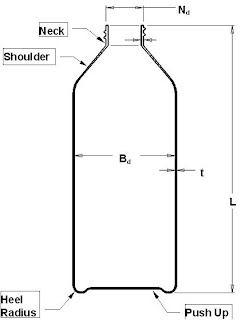How have it been started...
I found polymer processing as something: new/fresh (it was for me, and it is comparing to tooling methods), exciting (later about it), growing (new: processes, tools, machines, materials, etc.) and mystery (viscoelasticity). It was about 10 years ago in Poland at Warsaw University of Technology.
What I like in polymers the most? We know about the non-Newtonian characteristic of melted polymers. For that who are not familiar with basic terms for polymer processing I will prepare some more detailed information in the near future.

Briefly it is non-linear characteristic between shear stress, and shear rate, known as a flow curve. For Newton fluids (ex. water, petrol, melted metals, etc.) the curve is straight and dynamic viscosity, (the most important term in polymer processing!!!) is constant. For melted polymers (pseudoplastics fluids, viscosity falls with increasing shear rate) we can mark out tree characteristics stages for viscosity, linear for small shear rates, 1/10-10 [1/s], non-linear and linear for high shear rates 10^5-10^6 [1/s] when the shear viscosity is constant.

This is it I like the most. The non-linear behavior of polymers. When you increase the speed (ex. screw speed) you will observe that for some values your output (ex. power consumption) will be not increasing (or will not increase as much) will be constant, but you will have higher output. Sometimes it can be more complicated and depends on more factors!!! Characteristic is that in polymer processing everything depends on everything. You can apply it in the real process. It will be explained for injection molding. When you increase injection speed (proportional to sear rate) you should find the point when viscosity will be constant. It gives you quality, any changes in material or machine will not influence so much the product (ex. shrinkage). If you can try to use higher injection speed (if possible). How to do that the scientific approach will tell you and I will do it in the future.
I wanted to describe it simple but now I do not know if it was done simple. What do you think?
What I like in polymers the most? We know about the non-Newtonian characteristic of melted polymers. For that who are not familiar with basic terms for polymer processing I will prepare some more detailed information in the near future.

Briefly it is non-linear characteristic between shear stress, and shear rate, known as a flow curve. For Newton fluids (ex. water, petrol, melted metals, etc.) the curve is straight and dynamic viscosity, (the most important term in polymer processing!!!) is constant. For melted polymers (pseudoplastics fluids, viscosity falls with increasing shear rate) we can mark out tree characteristics stages for viscosity, linear for small shear rates, 1/10-10 [1/s], non-linear and linear for high shear rates 10^5-10^6 [1/s] when the shear viscosity is constant.

This is it I like the most. The non-linear behavior of polymers. When you increase the speed (ex. screw speed) you will observe that for some values your output (ex. power consumption) will be not increasing (or will not increase as much) will be constant, but you will have higher output. Sometimes it can be more complicated and depends on more factors!!! Characteristic is that in polymer processing everything depends on everything. You can apply it in the real process. It will be explained for injection molding. When you increase injection speed (proportional to sear rate) you should find the point when viscosity will be constant. It gives you quality, any changes in material or machine will not influence so much the product (ex. shrinkage). If you can try to use higher injection speed (if possible). How to do that the scientific approach will tell you and I will do it in the future.
I wanted to describe it simple but now I do not know if it was done simple. What do you think?



Comments